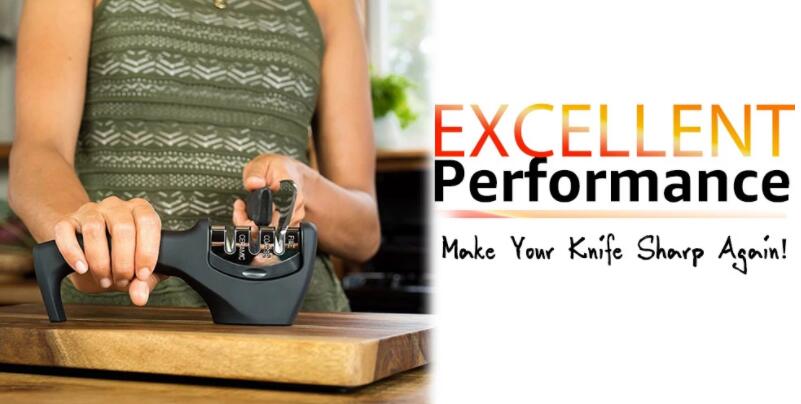USER GUIDE
- Thank you for purchasing LETCASE cutting products. Please read the instruction before use.
- Please be careful while unpacking the products. So as to avoid getting injures by the sharp edges. For your safety, please pay attention when holding the product.
HOW TO USE KNIFE CORRECTLY
- The cutting edge of the knife is sharpened and is ready for use.
- This knife is designed for cooking and household use, do not use it for any other purpose.
- The handle of the knife may have a chemical smell when you have just bought it, however, this is harmless to the human body and the smell will gradually disappear after several times of using the knife.
- Do not use when the blade is damaged or become deformed.
- Please be careful when cleaning the knife, otherwise, it would cause injury.
- Please place it out of reach of children.do not use the knives on extremely hard materials, such as metal or stones.
- Children who use knives should be under the supervision of adults.
- Do not heat the blade or burn it directly on or near the fire.
- The high temperature will deteriorate or damage the blade.
- Do not place the knife too close to the flames, otherwise, the handle may be bent or deformed.
HOW TO CARE KNIFE APPROPRIATELY
- The blade is made of stainless steel or high carbon stainless steel or Damascus steel, which is resistant to corrosion.
- Nevertheless, for better maintenance, please clean the knife and dry it thoroughly after use. Dirt or water left on the knife may cause the blade to rust.
- Do not wipe the blade with nonwoven nylon products.
- It is best to sharpen the knife once a week to keep its sharpness. As for the Damascus knife, don't sharpen it so frequently.
- We recommend hand-wash knives, don't put them in the dishwasher or dryer to avoid contacting other hard materials to damage the knife.
HOW TO REMOVE RUST
- If you noticed there is rust on the blade, immediately wipe it off with detergent.
- When the blade is corroded, re-sharpen the knife.
HOW TO HOLD KNIVES And CUT CORRECTLY
As different knives have different uses, ways of holding and cutting can give full play to the performance of them.
① Pressing grip method:

- Applicable knives: Chef knife, Santoku knife, Paring knife, Slicing Knife, Utility knife
- The pressing grip method is usually in three cutting techniques: stabbing, chopping, and pressing.
- Push cut: This way is applicable to hard and thick vegetables, roots and fruits, such as potatoes, which require a little force to push the knife a little forward down into the vegetables.
- Rock chop: It is used for fine cutting of vegetables, e.g. cutting shallot pieces, where the knife moves down the front, but withdraws to the former position once it touches the cutting board; which are faster and repetitive motions, of which the essential is smooth using of the knife.
- Pull cut: It is applicable to the relatively soft foods, such as tofu, where it does, but the weight of the knife itself, in a way that the knife falls straightforward.
② Holding grip method:

- Applicable knives: Chopper, boning knife, food knife, small food knife, kitchen knife, slicing knife, Western kitchen knife, and frozen meat knife.
- The holding grip method is in three manners, pressing slicing, fine slicing, and chopping slicing.
- Pressing slicing cut: It is applicable meat, such as fish of soft bones, and thinner foodstuff, such as seaweeds. With the knife in the hand and the tip on the cutting board as a fulcrum, press down the blade quickly to cut.
- Fine slicing cut: It is used to cut the ingredients into fine pieces. The hand that holds the knife handle and the hand on the knife back exert force alternately to make the curve blade rock, which moves at one end when it goes up; through the hand, rocking left and right, the blade goes on the foodstuff back and forth, which then is cut into pieces.
- Chopping slicing cut: It is mainly used for chopping large bones, such as pork chops and chickens. Wave the hand with the knife up and down to chop at the tail part of the blade by virtue of the knife's weight. If a thin knife is used in this way, the blade will rollover. Therefore, please be sure to use thick knives such as butchers and bone cutting knives.
③ Finger-pressing grip method:
- Applicable knives: Slicing knife, Chef knife.
- Finger-pressing grip manner is only used for slicing and cutting.
- Both slicing and peeling manners are used to cut the foodstuff with the total length of the blade. They are mainly used for slicing large pieces of fish or meat into slices or pieces. With the tail of the blade against the food, pull the blade from the tail to the tip direction, so that the whole knife cuts to the tip in the manner of arc drawing towards the tail, where the innermost part of the food is cut off by the tip. This way is good for cutting the turkey.
④ Peeling grip method:

- Applicable knives: Utility knife and paring knife
- The peeling grip method is only used to peel fruits.
- Grip the knife with the right hand as shown in the figure with the blade inward, and the edge toward the left hand. During peeling, the left-hand holds the fruit, the right-hand holds the knife, and the knife is moved along the direction of peeling.
⑤ Carving grip method:

- Applicable knives: Utility Knife and paring knife.
- The carving grip method is only used for carving cuts.
- It is a method to use a small knife for fine work. The knife is held as a carving tool in small moves, which is very effective in artistic processing.
HOW TO SHARPEN KNIVES
① The sharpening method with sharpening steel
The sharpening steel is mainly used as the sharpening tool on the food processing site, which is a professional tool for the knives that have become blunted due to the adhesion of grease on the blade. In addition, if a blunt knife is not sharpened in time. It cannot bring about the best result Therefore, during the sharpening. the sharpening angle is more important than the speed.
Please always keep the blade around 20 degree against sharpening steel.

- Hold the sharpening steel with one hand and the knife with the other hand. Set the knife against the sharpener, pull the knife upward from the tail part of the blade to the tip part.
- Set the knife on the other side of the sharpener and pull it in order to sharpen the other side of the blade. Repeat Step 2 and 3 five to ten times.
② Sharpening method with a pull-through sharpener
Hold the sharpener with one hand to fix it on the table, hold the knife with the other hand: put the blade into the sharpener and pull it quickly in the inward direction several times. Then the knife restores the sharpness.

- Use it while it is oil-free, wet the sharpening area of the sharpener before using, and rinse to clean it after using.
- It is applicable to all kinds of knives, except for those with teeth.
③ Sharpening method with a whetstone
- Please soak the whetstone in water before grinding until no bubbles come out of the whetstone.
- Grind the knife on the whetstone as shown in the figure below Where reciprocating motion is used for both sides of the blade.

- After grinding several times, please touch the other side of the edge being ground with the finger, if rolled edge is found, stop grinding that edge immediately and then turn the blade over to grind another side, keep grinding when rolled edge appears on the other side till the rolled edge disappears through feeling with the finger.
- Please always keep the knife at an angle of 15° or 20°with the whetstone: for chopping, the angle is 20°, for bone knife, the angle is 20°-25°.
- The fluid generated during sharpening is a kind of necessary grinding fluid, which needs no removal.
- During the sharpening, be careful not to touch the raised part of the whetstone surface. If the whetstone surface is not smooth the knife will not get sharp despite of your effort. When the whetstone surface becomes uneven, please press the surface against a flat rock to grind till it becomes flat and smooth.

Note
In general, knife steel is used for on-site sharpening in a handy way:
Pull-through sharpeners are simple and lightweight which are now widely used by most families.
Whetstones are a traditional sharpening tool, but which is inconvenient and require skills. Functionally speaking, the whetstone is the best tool for sharpening, in particular, a precision whetstone can give result to a sharp and durable knife. Because the whetstone gives out a fine and smooth blade in contrast of knife steel and pull-through sharpener, for the latter ones, the blade shows teeth under the magnifying glass, which is not really sharp and will not last long, or even will cause rough damage to the knife, so it is recommended to use the whetstone in a professional way.


0 comments